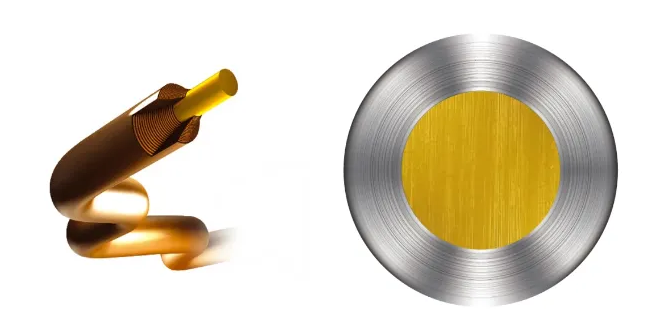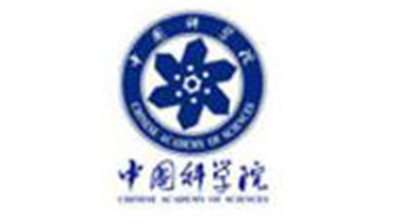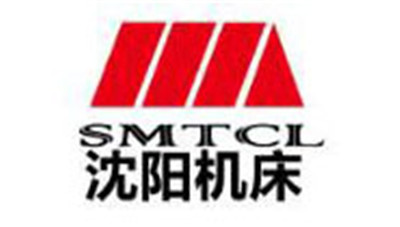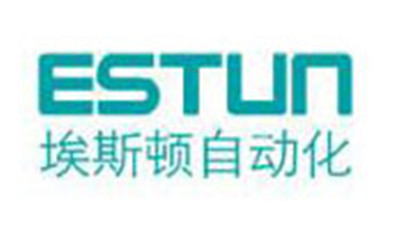The development process of winding technology and equipment is a constantly evolving and technologically innovative process, and its evolution trajectory can be clearly divided into multiple stages, involving various aspects such as wires, coils, and winding equipment. Original by Chen Zexiang
Wire: From basic flat wire to diversified wire selection
As for wire, it is reported that centralized flat wire winding was developed in 1995, indicating that flat wire as a motor winding material had already begun to be applied in the mid-1990s.
The true rise of vertical winding technology occurred in the past decade, although it started relatively late, it has developed rapidly. With the advantages of increasing winding density and reducing losses, it has gradually become the mainstream technology in the manufacturing of magnetic components.
In recent years, with the rise of the new energy market and the development trend of high-frequency applications, new types of wires such as pressed square wire, Litz wire, three-layer insulated wire, FIW wire, and membrane wrapped wire have also attracted much attention.
Especially FIW wire, this type of wire has gone through a development process from scratch and from small to large in China. Five years ago, FIW wires were relatively rare in China, but now there are many manufacturers producing them with excellent quality, widely used in fields such as network transformers.
Coil: A Revolutionary Journey from Bare Wire to Aluminum Wire Vertical Winding
The development process of coil technology is a journey full of innovation and change. From the initial bare wire vertical winding technology, to the later copper wire vertical winding, and now to the aluminum wire vertical winding, this technology has undergone significant changes and upgrades.
In the early stages, bare wire vertical winding technology served as the starting point for coil technology, laying a solid foundation for innovation in the industry.
However, this technology faces many challenges in practical applications, such as the twisting problem in the middle part of the coil, which requires the use of a large amount of insulating film for fixation. However, with the continuous maturity and advancement of technology, these problems have gradually been solved.
With the passage of time, copper wire vertical winding technology has gradually emerged. Compared with bare wire winding, copper wire winding has significantly improved in terms of conductivity and stability. The emergence of this technology has further promoted the application and development of coil technology in various fields.
In recent years, the competition in the magnetic component industry has become increasingly fierce. In order to effectively control costs, aluminum wire vertical winding technology has become a new trend in the development of coil technology. Compared to copper, aluminum stands out with its lower cost and lighter weight, bringing significant advantages in cost-effectiveness and lightweighting to aluminum wire vertical winding technology.
At the same time, with the continuous progress of materials science and manufacturing technology, the performance of aluminum wire vertical winding technology has also been greatly improved, gradually meeting the needs of various complex application scenarios.
It is worth noting that cross-border integration has become an important trend in the development of online circle technology.
Traditional transformer or winding machine manufacturers are facing competitive pressure from cross-border spring mechanism manufacturers. This competition not only drives innovation and development in coil technology, but also brings new business opportunities and challenges to enterprises in the industry.
In addition, significant achievements have been made in the application of coil technology in the field of photovoltaics. With the rapid development of the photovoltaic industry, the demand for efficient and stable coil technology is increasing day by day. The continuous innovation and progress of coil technology provide strong support for the development of the photovoltaic industry.
Equipment: Development from manual winding to fully automatic winding
Early coil production mainly relied on manual operation, which was inefficient and limited by insufficient manpower supply. More importantly, manual labor results in poor consistency of coil characteristic indicators and a high rate of defective products.
As a labor-intensive industry, magnetic component companies have long faced the challenges of recruitment difficulties and high labor costs. Around 2013, the industry began to realize the importance of automation transformation, gradually shifting from relying solely on manual production to introducing automated equipment for production.
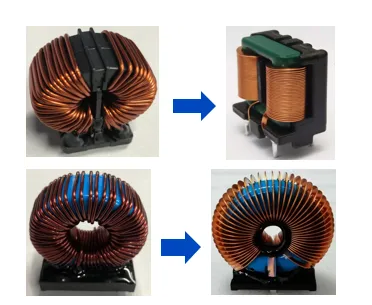
In this transformation process, many enterprises have already proactively considered the demand for subsequent automation production when designing magnetic component processes, and made corresponding adjustments accordingly.
With the continuous advancement of technology, the winding process and equipment have gradually achieved fully automated production. The square coil vertical winding machine, 8-shaped square coil vertical winding machine, ring-shaped magnetic core vertical winding machine, SQ winding machine and other equipment have promoted the production process of magnetic components, achieved fast and efficient winding methods, and reduced labor costs.
Taking the double headed flat wire winding machine developed by Maiwei Intelligent as an example, it can wind 240 flat wire inductors per hour, increasing production efficiency by more than 4 times; The fully automatic dual axis magnetic ring inductor winding machine launched by Xingte Technology effectively reduces costs by 30% and improves customer adaptability by 30%.
In addition, some unique winding techniques such as large circular winding have also been continuously developed and improved, achieving a winding density of 5.3 for a single winding wire, providing strong support for the production of large transformers such as 30kw transformers.
The development process of winding technology and equipment is a continuous process of innovation and upgrading.
From ancient equipment to modern fully automated production lines, from traditional wires to new high-performance wires, from simple winding processes to complex continuous winding and vertical winding technologies, winding technology and equipment are constantly evolving and developing, providing strong support for the development of magnetic component manufacturing industry.
Post time: Dec-31-2024

